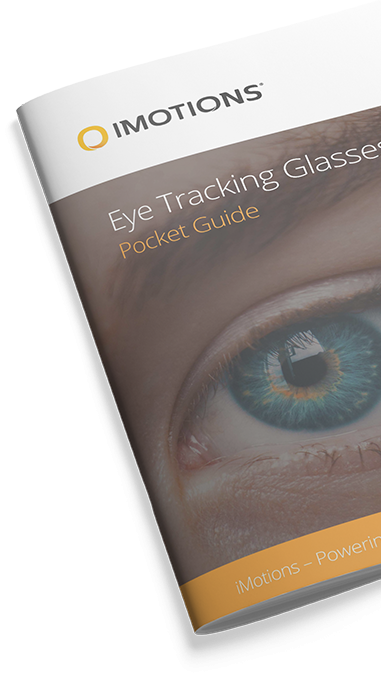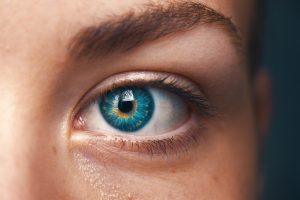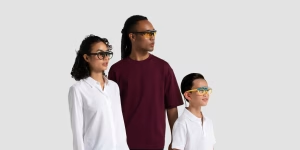Mobile eye tracking, particularly through the use of eye tracking glasses, represents a significant advancement in understanding visual behavior in natural environments. Unlike stationary screen-based systems, mobile eye tracking allows for the analysis of gaze patterns in dynamic, real-world settings. This article explores the mechanics of mobile eye tracking with eye tracking glasses, their applications, and the benefits they offer.
What is Mobile Eye Tracking?
Mobile eye tracking involves using wearable devices, such as eye tracking glasses, to monitor and record eye movements in real-time as the user moves through various environments. These glasses are equipped with advanced sensors and cameras that capture detailed eye movement data, providing a comprehensive view of the user’s gaze path.
How Eye Tracking Glasses Work
- Infrared Illumination: Similar to screen-based systems, eye tracking glasses use infrared light to illuminate the eyes. Infrared LEDs are built into the frame of the glasses, creating the necessary reflections on the cornea and pupil.
- Integrated Cameras: Eye tracking glasses are equipped with small, lightweight cameras. These typically include:
- Eye Cameras: Positioned to capture detailed images of the eyes.
- Scene Cameras: Positioned to capture the user’s field of view, providing context to where the user is looking.
- Pupil and Corneal Reflection Detection: The cameras capture the reflections of the infrared light off the cornea and pupil. The eye tracker’s software then analyzes these reflections to determine the precise direction of the gaze.
- Real-Time Processing: Advanced algorithms process the captured images in real-time, calculating the user’s gaze direction and mapping it onto the scene captured by the front-facing camera. This creates a dynamic record of the user’s gaze path as they move through their environment.
- Calibration: Calibration ensures accuracy by having the user look at known points while the system records the corresponding eye positions. This process is crucial for aligning the eye movement data with the user’s actual field of view.

Applications of Mobile Eye Tracking
- Sports Performance Analysis: Coaches and sports scientists use eye tracking glasses to study athletes’ visual behavior during training and competition. By analyzing where athletes focus their attention, trainers can provide targeted feedback to improve performance.
- Consumer Behavior Research: Marketers and researchers employ mobile eye tracking to understand how consumers interact with products in real-world shopping environments. This data helps in optimizing product placement, packaging design, and store layouts.
- Psychological and Cognitive Studies: Researchers use mobile eye tracking to study visual attention and cognitive processes in natural settings. This includes understanding how people navigate environments, make decisions, and interact with objects and others.
- Education and Training: Educators use eye tracking glasses to study learning behaviors and improve instructional methods. In professional training, eye tracking can help in assessing and enhancing skills, such as those required in medical or technical fields.
- Human-Computer Interaction (HCI): Mobile eye trackers are used in HCI studies to evaluate how users interact with various devices and interfaces in everyday situations, leading to the design of more intuitive and user-friendly technology.
Benefits of Mobile Eye Tracking
- Natural Environment: Eye tracking glasses allow for the study of gaze behavior in natural, uncontrolled environments, providing insights that are more reflective of real-world interactions.
- Versatility: These devices can be used across various settings and applications, from sports fields to retail stores, offering broad research and practical applications.
- Detailed Gaze Path Analysis: Mobile eye tracking provides a comprehensive view of the user’s gaze path, capturing both the point of focus and the surrounding context, which is crucial for understanding complex behaviors.
- Portable and Lightweight: Eye tracking glasses are designed to be portable and lightweight, making them comfortable for users to wear over extended periods without affecting their natural behavior.
Real-World Examples
- Retail Shopping Studies: Researchers use eye tracking glasses to study how shoppers navigate stores, which products attract their attention, and how they make purchasing decisions. This data helps retailers optimize store layouts and product placements.
- Driving Research: In automotive research, eye tracking glasses are used to understand driver behavior, including where drivers focus their attention and how they respond to road conditions and potential hazards. This information is vital for improving vehicle safety and driver assistance systems.
- Sports Training: Eye tracking glasses are used by coaches to analyze athletes’ visual strategies during games. For instance, in baseball, understanding where a batter focuses their gaze can help in refining hitting techniques.
Case Studies
- Consumer Insights in Supermarkets: A study using eye tracking glasses in a supermarket revealed that end-cap displays attract significantly more attention than middle-aisle displays, leading to changes in product placement strategies to boost sales.
- Improving Surgical Training: Eye tracking glasses were used in a surgical training program to analyze where trainees focused during procedures. The data helped instructors identify areas where trainees needed more guidance, improving the overall training effectiveness.
Conclusion
Mobile eye tracking with eye tracking glasses offers unparalleled insights into visual behavior in real-world settings. By capturing detailed gaze data in dynamic environments, this technology helps researchers and practitioners understand how people interact with their surroundings, providing valuable information that drives improvements in performance, design, and safety across various fields.
For those interested in leveraging mobile eye tracking technology, eye tracking glasses provide a versatile and effective solution for gathering comprehensive data on user behavior, enhancing research outcomes, and optimizing real-world interactions.
Eye Tracking Glasses
Compare the best in market
- Compare the specifications of each hardware
- Learn more about eye-tracking metrics
- Finding the right equipment for
your research
Eye Tracking Glasses
The Complete Pocket Guide
- 35 pages of comprehensive eye tracking material
- Technical overview of hardware
- Learn how to take your research to the next level











